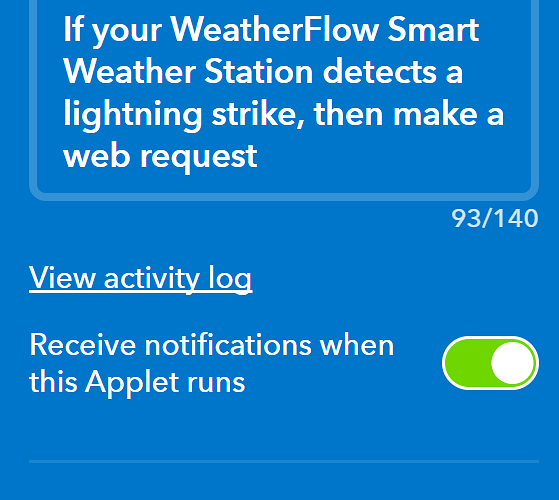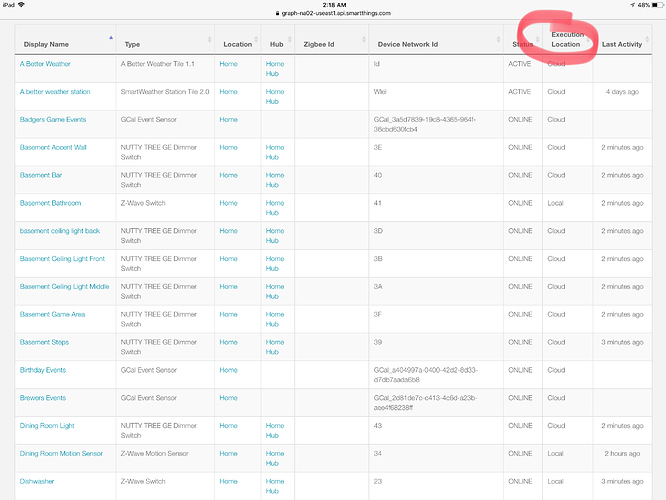Nice video! I really appreciated seeing it on a video makes it a lot easier to follow. Hope to see more on these on the fourm thanks.
[Video] Setup IFTTT (Alexa & Google Home) to trigger Pistons/Actions
Thanks for the video! There are other ways, as well, of course. Personally, I avoid relying on IFTTT (yet another “cloud” to throw into the mix that could cause delays or be down when I need to use it, etc.–ST is bad enough). Instead, I create a “momentary switch” (not a simulated button, which I’d prefer except Alexa doesn’t support them) in the ST IDE, then use that switch turning on as a trigger to run the piston in WebCoRE. That’s the best way I can figure out how to use it with Alexa. This, however, is a great way for people who want something more “point and click,” so I’m sure it will be helpful for many and I look forward to future videos!
This is great work. I really like the well organized instructional video. So far I’ve been using ST virtual buttons to trigger (mostly) lighting routines with Alexa, such as ‘Alexa, turn off All the Inside Lights’. I have a virtual button named ‘All the Inside Lights’ that triggers a piston to turn off the various lights in my home. It’s nice to have an option to broaden that capability to other devices while using human-friendly Alexa phrases.
That’s what I was doing before, and for some natural voice command stuff I was telling Stringify to run xyx which just flipped certain virtual switches.
I just wanted to simplify.
Less ST routines, less Virtual Switches. Keeping it all organized in WC with a few ifttt triggers is all now
I agree and prefer using virtual switches for these types of things. I’d rather not have to rely on another trip to the cloud and IFTTT is not always quick. I also don’t want other people in the house to have to remember to say ‘trigger’ when they want to initiate certain actions. I hope to have it as natural as possible.
I do wish that the ST app allowed re-ordering and visual grouping of Things though. That would help tremendously with organization.
The organization issue is one of my primary motivations using this method.
I have 100+ devices. It’s maddening having all the virtual staking up even more space. All they have to do is make a “hidden” option for devices. And a “show hidden” menu item and it would hugely impact device organization
Thanks for the video. I followed the first part to create the trigger, but not sure what settings I should use in the following situation where I am not using Alexa. Instead of Alexa, I want to link to a message/notification being sent by WeatherFlow (see images below). Would the Method still be a GET, or would it be POST (or something else)?
Sonos - How do you check/report the play state of Sonos (to set a variable)?
Just a question. Isn’t webcore still the cloud so either ifttt or webcore will cause delays.
Does it matter?
How do you know what runs locally and what doesn’t, since Samsung needs to contact and go to hue lights through the cloud anyway.
it is cloud based. not local.
delays are normal. mine averages 1-2 seconds from then alexa says ok to when my actual routine phusically starts running.
absolutely nothing bothersome. I use this for individual good night and good morning routines for the wife and I. zero issue with functionality or delay.
If you log into the smarttthings ide page and go to ‘my devices’ , it will list all your devices you have Setup. There is a column that says execution location. From there it will say either local or cloud. It doesn’t include smart apps.
Is it possible to save a variable based on what you say to Alexa and use it in IFTTT? (or anywhere) Alexa turn on bathroom light for 5 min… can the 5 be stored as a variable and then passed to webcore?
You can make your own Alexa skill to do this, but it is a royal PITA with limited documentation available. I am really hoping they streamline the process in the near future
Well, I have passed variables to IFTTT via Alexa in the past… but the work involved is honestly not worth it last time I checked. (unless you are just bored) There is three levels of code (node.js, PHP, and Lambda) that has to be written for each expected variable. In other words, code must be written in advance in 3 different places, in 3 different languages, for each and every expected possibility…
So, for example, if you were trying to program for ten possible commands, you could easily expect 500+ lines of code in three different languages for the simplest of actions. Much more code if you add any complexity to it.
I’ve published 4 or 5 Alexa skills so far, and I have promised myself no more until their format/procedure changes & improves. I keep hoping someone creates a web-app to tie it all together…




